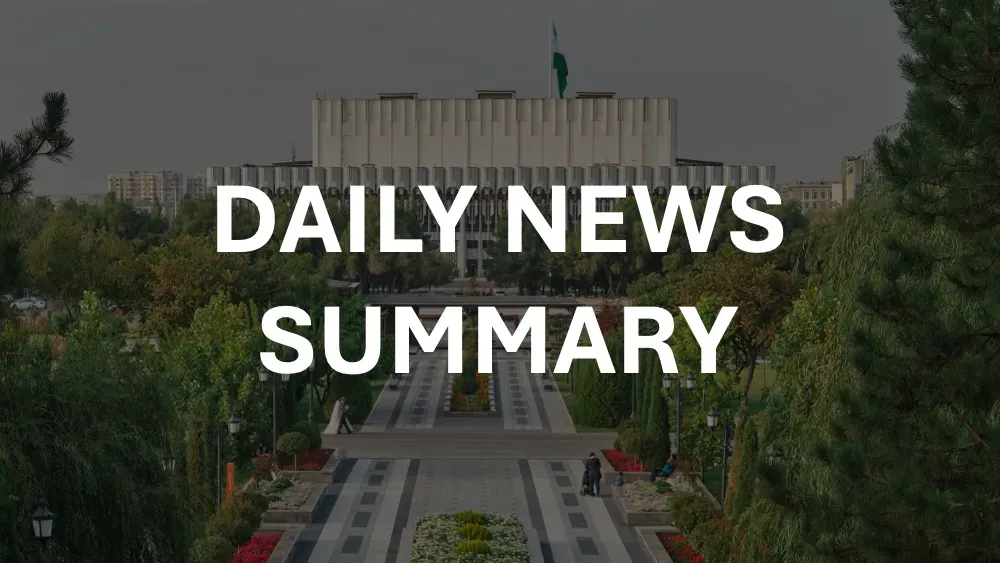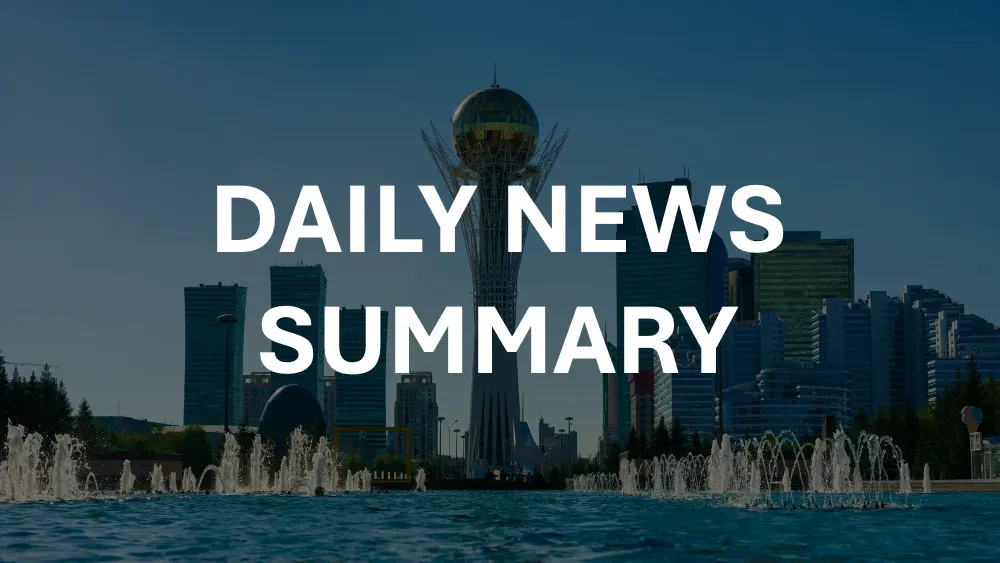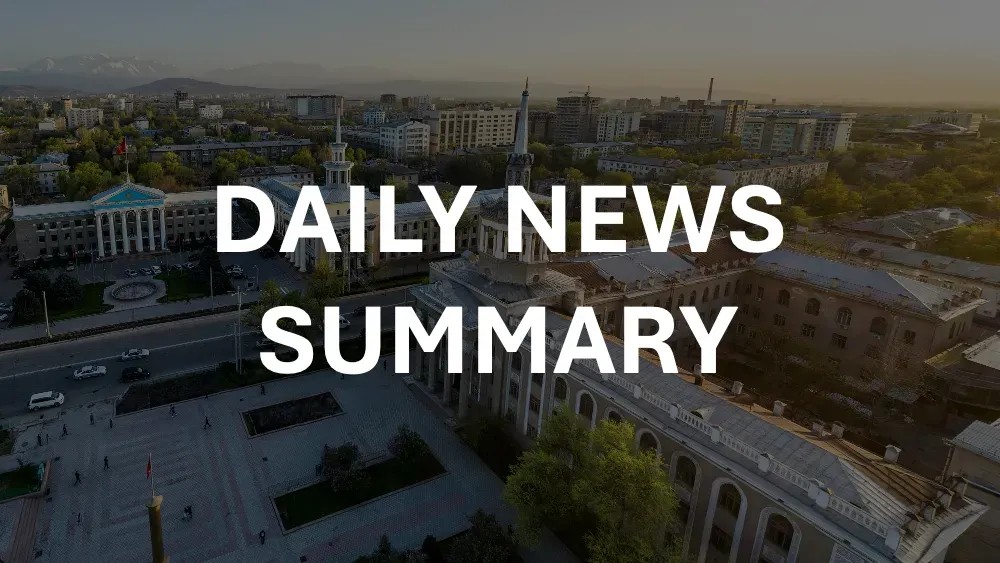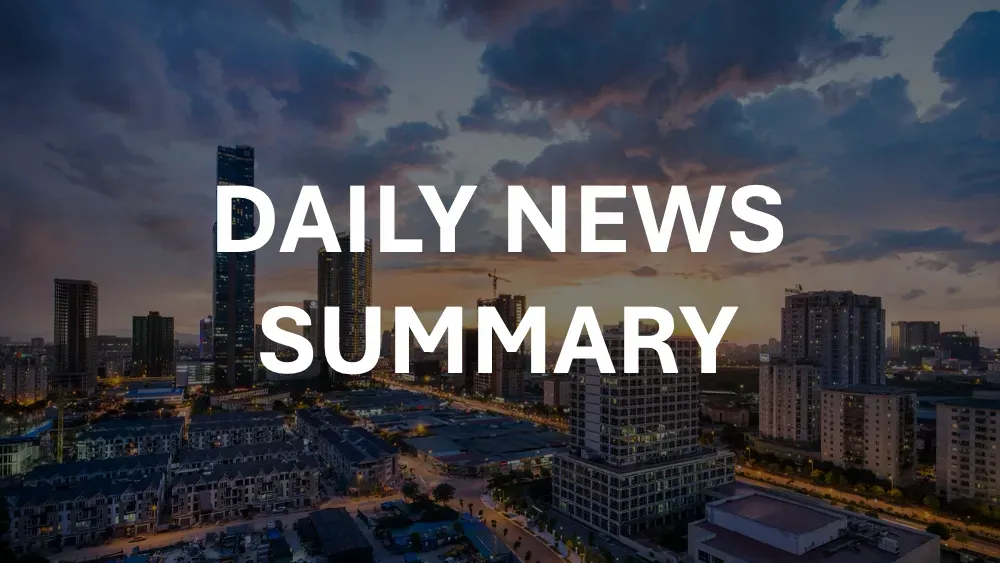📍 Get daily intelligence from Uzbekistan and Central Asia. Lexica News delivers local news that shapes global decisions—synthesized from local sources international media misses.
Uzbekistan recorded 6.5% real GDP growth in 2024, outpacing regional peers while implementing comprehensive market reforms that attracted record foreign investment flows. The World Bank's $4.65B country portfolio represents the largest development partnership in Central Asia, supporting structural changes that transformed an insular economy into an increasingly competitive investment destination. International companies report experiencing liberalized currency operations, streamlined business registration processes taking just three days, and access to previously restricted sectors following eight years of sustained reform implementation.
Current data reveals both opportunities and ongoing challenges in Uzbekistan's economic transformation. While the country received $7.2 billion FDI in 2023, nearly double 2022 levels, state-owned enterprises still control significant economic segments despite privatization commitments. The analysis examines how regulatory modernization, currency liberalization, and investment incentive restructuring have reshaped market dynamics while identifying persistent gaps between policy announcements and operational realities for international stakeholders.
Current Landscape: Reform Implementation and Market Conditions
Uzbekistan eliminated the dual exchange rate system in September 2017, removing the difference between official and black-market rates that had constrained business operations for decades. The Currency Regulation Law adopted in October 2019 fully liberalized currency operations, current cross-border, and capital movement transactions, enabling unrestricted profit repatriation for foreign investors. Four foreign currencies—the U.S. dollar, euro, pound sterling, and Japanese yen—now trade freely in commercial exchanges across urban centers.
The banking sector demonstrates measurable transformation progress. Following the Ipoteka Bank privatization in 2023, authorities advanced preparations to privatize two large state banks, SQB and Asakabank, as part of the 2020-2025 banking reform strategy targeting 40% state ownership in the sector. Commercial banks report expanded trade finance availability, with the EBRD providing over €300 million through trade finance limits and direct lending to financial institutions in 2024.
Energy price liberalization advanced significantly after years of delays. The government increased energy prices for firms in October 2023 and for households in May 2024, with additional increases scheduled for April 2025 targeting full cost recovery by end-2026. Industry representatives acknowledge these increases create operational cost pressures while improving sector transparency and attracting private investment in modernization projects.
Regulatory streamlining shows concrete progress with measurable business impact. The Presidential Decree of February 19, 2024 addressed regulatory complexity by recognizing reference norms dominance in legislation and increasing directly applicable laws to reduce interpretation disputes. Between 2021-2023, authorities abolished over 10,000 inefficient regulations, while business registration now requires only three days compared to regional averages exceeding two weeks.
Documented Investment Experiences: Sectoral Performance and Stakeholder Outcomes
Manufacturing sector investments demonstrate both successful penetration and persistent challenges. Automotive firms including BYD, KIA, and General Motors established production facilities that positioned Uzbekistan as Central Asia's leading car producer, benefiting from preferential import duties and streamlined permitting for industrial projects. The textile sector attracted $9.8 billion in investments since 2017, supported by labor law reforms addressing forced cotton picking practices and improving international compliance standards.
Mining sector operations reveal mixed investor experiences. Navoi Mining and Metallurgical Company ranks among the top four global gold producers, while Almalyk Mining and Metallurgical Complex maintains leading global copper production positions. International mining companies report improved transparency in licensing processes but continuing bureaucratic delays in environmental approvals and land use permits that extend project development timelines beyond initial projections.
Financial services market access expanded significantly for international providers. The EBRD invested €938 million through 34 agreements in 2024, with 24% directed to local banks for SME lending and women and youth entrepreneur support. Foreign banks document improved operational flexibility following currency liberalization, though credit risk assessment remains complicated by limited credit bureau data and inconsistent financial reporting standards among local enterprises.
Technology sector development shows rapid growth from a low baseline. IT Park initiatives attracted international companies, though specific investment figures remain limited compared to manufacturing and energy sectors. Software development and IT services exporters report favorable tax treatment through special economic zones, while telecommunications market liberalization proceeds gradually with continued state influence in major infrastructure decisions.
Infrastructure projects demonstrate substantial international engagement with execution challenges. The National Investment Program 2023-2025 contains nearly 800 projects worth $55.4 billion, focusing on transportation, energy, and industrial development. International contractors report improved payment reliability and reduced bureaucratic delays, though project timelines frequently exceed initial estimates due to coordination issues between various government agencies.
Understand Uzbekistan Like an Insider
This analysis draws from extensive research, but the story continues to evolve daily. Lexica synthesizes breaking developments from dozens of Uzbek news sources—from mining policy changes to local protests that never make international headlines.
Our daily intelligence briefs help executives, diplomats, and researchers track:
- Regulatory shifts affecting foreign investment
- Local opposition to development projects before they escalate
- Market dynamics that signal opportunity or risk
- Political developments that reshape the business landscape
Stakeholder Realities: Government Data Versus Business Experiences
Government statistics indicate FDI reached 30.5% of total investment in 2024, with official data showing steady improvement in business environment rankings and investment climate indicators. The State Assets Management Agency reports progress toward privatization targets, with plans to reduce SOEs from 3,000 to 650 by 2026.
Business surveys reveal implementation gaps between policy announcements and operational realities. International companies report that case-by-case approval processes continue slowing investment decisions despite legislative improvements. Local partners document persistent informal payments for expediting permits and approvals, though amounts decreased compared to pre-2017 practices. Currency convertibility operates smoothly for major transactions, while smaller businesses occasionally experience delays in foreign exchange access during peak demand periods.
Legal framework improvements show measurable progress with remaining uncertainties. The Investment Activities Law adopted in December 2019 guarantees protection from nationalization and free fund transfers, providing enhanced investor confidence. However, current legislation contains unclear definitions and references that create interpretation disputes, particularly in tax obligations and regulatory compliance requirements.
Employment and labor market conditions reflect mixed stakeholder experiences. International manufacturers report improved workforce availability and reduced labor restrictions compared to neighboring markets. Local employment agencies document wage pressure increases due to labor migration to Russia and Kazakhstan, with significant remittances while creating domestic labor shortages in specific skilled categories.
Transparency and governance improvements demonstrate institutional progress alongside persistent challenges. Corruption scores on Transparency International's index improved substantially, while businesses report reduced frequency of administrative harassment. Anticorruption agency establishment in 2020 increased investigation visibility, though enforcement consistency varies across regions and institutional levels.
Operational Context: Investment Costs and Regulatory Processes
Investment establishment costs vary significantly by sector and project scale. Manufacturing projects report land lease costs ranging from $0.50 to $2.50 per square meter annually in industrial zones, with construction permits typically requiring 45-90 days processing time compared to 120+ days previously. Special economic zones offer VAT reduction from 20% to 12% and streamlined customs procedures, though zone infrastructure quality remains inconsistent across different locations.
Banking and financial services setup demonstrates improved efficiency with remaining complications. Foreign banks report capital requirements aligned with international standards, while licensing processes require 6-12 months completion time. Local banking partnerships provide market access advantages, though due diligence procedures remain time-intensive due to limited public information availability about potential partners and their beneficial ownership structures.
Energy sector investment requires substantial upfront costs with improving return predictability. Energy tariff reforms advancing toward cost recovery by 2026-27 provide clearer revenue projections for private investors, while government guarantees reduce regulatory risk for renewable energy projects. Solar and wind project development timelines average 24-36 months from permit application to grid connection, with land acquisition representing the most significant procedural bottleneck.
Tax administration modernization shows measurable improvement in predictability and compliance costs. Corporate income tax remains stable at 12% for most sectors, with additional incentives available through special economic zones and priority sector designations. International companies report reduced tax inspection frequency and improved dispute resolution processes, though interpretation differences continue affecting transfer pricing and intercompany transaction assessments.
Labor regulations provide flexibility advantages compared to regional comparisons. Employment contracts allow probationary periods up to three months, while termination procedures require 30-day notice periods for standard dismissals. Work permit requirements for foreign employees typically require 30-45 days processing time, with simplified procedures available for investors meeting minimum capital thresholds. Social insurance contributions total approximately 25% of gross wages, distributed between employer and employee obligations.
Infrastructure access and utility connections demonstrate both improvements and persistent challenges. Electricity grid connections for industrial projects require 90-180 days completion time, while telecommunications infrastructure provides adequate coverage in major urban areas with limited rural availability. Transportation infrastructure improvements support logistics operations, though cross-border procedures with neighboring countries continue creating delays for import-export dependent businesses.
Regional Comparison: Central Asia Investment Climate Analysis
Kazakhstan maintains Central Asia's leading investment position with $150 billion in cumulative FDI over 30 years compared to Uzbekistan's $40 billion. Kazakhstan's earlier liberalization timeline and oil resource advantages created structural advantages, while Uzbekistan's reform acceleration since 2017 demonstrates rapid catch-up potential with 6.6% projected growth in 2025 exceeding Kazakhstan's projected 4.5-5.5%.
Business establishment procedures favor Uzbekistan with three-day registration compared to regional averages exceeding one week. Corporate tax rates show competitive positioning with Uzbekistan's 7.5% SEZ rate and 12% standard rate compared to Kazakhstan's 20% standard corporate tax. Currency convertibility operates smoothly in both countries, while Uzbekistan's more recent liberalization includes fewer legacy restrictions than Kazakhstan's evolving framework.
Kyrgyzstan and Tajikistan demonstrate higher projected rates for 2025 but smaller absolute investment volumes and limited sectoral diversification opportunities. Both countries offer lower operational costs but face infrastructure constraints and smaller domestic markets that limit scalability for regional investment strategies.
Turkmenistan maintains restrictive investment policies with limited foreign participation opportunities outside energy sectors. Foreign exchange access remains constrained, while regulatory transparency lags significantly behind Uzbekistan's reform progress. Regional companies report Uzbekistan providing substantially improved operational flexibility and market access compared to Turkmenistan's controlled economy approach.
Conclusion
Uzbekistan's economic transformation demonstrates substantial progress in market liberalization while revealing persistent implementation challenges that affect international investment operations. 6.5% GDP growth in 2024 combined with record FDI inflows of $7.2 billion indicate successful attraction of international capital, though the government's target of $120 billion in private investment over five years requires sustained institutional development beyond current achievement levels.
Currency liberalization and regulatory modernization created measurable operational improvements for international businesses, while energy price reforms and banking sector privatization advance market mechanisms previously absent from the economy. The planned privatization of 115 major companies between 2025-2028 represents potential acceleration in private sector participation, though execution timelines remain uncertain given previous program delays.
Regional positioning improved significantly relative to Central Asian peers, with business establishment procedures and tax frameworks competing effectively against Kazakhstan's advantages while offering superior conditions compared to restrictive neighbors. The World Bank's $4.65 billion portfolio and EBRD's record investment of €938 million in 2024 demonstrate continued institutional confidence in reform sustainability.
Key monitoring indicators include privatization execution against announced timelines, energy tariff implementation affecting operational costs, and regulatory clarity improvements addressing current interpretation disputes. The gap between policy announcements and operational implementation continues narrowing, though business stakeholders report persistent coordination challenges between government agencies that extend project development timelines beyond initial projections.
Frequently Asked Questions
What specific reforms have most improved Uzbekistan's investment climate since 2017?
Currency liberalization eliminating dual exchange rates, energy price reforms advancing toward cost recovery, and banking sector privatization demonstrate the most significant operational improvements. The elimination of export surrender requirements and introduction of free profit repatriation removed major historical constraints on international business operations.
How do investment incentives currently operate in practice?
Case-by-case approval continues for major projects, while special economic zones provide standardized benefits including VAT reduction from 20% to 12% and streamlined customs procedures. Manufacturing and export-oriented projects receive priority consideration, with processing timelines averaging 60-90 days for incentive package approval.
What are typical timelines and costs for establishing operations?
Manufacturing projects require 3-6 months for full establishment including permits and registrations, while service sector businesses can begin operations within 30-60 days. Initial setup costs range from $50,000-$200,000 for small-scale operations, with land lease and construction costs varying significantly by location and industrial zone selection.
How does privatization progress affect investment opportunities?
The 2025-2028 privatization program targeting 115 companies includes major enterprises in energy, transport, metallurgy, and telecommunications. IPO plans for Navoi Mining and Metallurgical Company and other strategic companies provide equity investment opportunities previously unavailable to international investors.
What challenges continue affecting business operations?
Unclear definitions create interpretation disputes, while bureaucratic coordination between agencies extends project approval timelines. Currency access functions smoothly for major transactions, though smaller businesses occasionally experience delays during peak demand periods. Infrastructure constraints outside major cities limit operational expansion options.
How does Uzbekistan compare to regional investment alternatives?
Uzbekistan offers faster registration and competitive tax rates compared to Kazakhstan, while providing larger domestic market access than Kyrgyzstan or Tajikistan. Recent reforms created operational advantages over Turkmenistan's restrictive environment, though Kazakhstan maintains advantages in financial services infrastructure and cumulative international business presence.
What sectors demonstrate strongest growth potential?
Manufacturing continues attracting substantial investment with automotive and textile sectors showing established success. Renewable energy benefits from government commitments to cost-recovery pricing and streamlined permitting. Financial services market liberalization creates opportunities for international providers, while mining sector privatization provides equity investment access to established operations.
Track Uzbekistan with Local Intelligence
The rare earth story exemplifies why local sources matter. While international media reports MOUs and ministerial visits, Uzbek outlets cover the community protests, water disputes, and regulatory changes that actually determine project outcomes.
Lexica delivers what you're missing:
- Daily briefs at 7AM Tashkent time covering 40 top stories from politics to economics
- Full-text synthesis from sources in Uzbek
- Searchable archive to track how today's announcements connect to yesterday's promises
- Multi-country coverage across Central Asia for regional context
Whether you're evaluating investment opportunities, monitoring supply chain risks, or analyzing geopolitical developments, local intelligence reveals what international headlines obscure.










